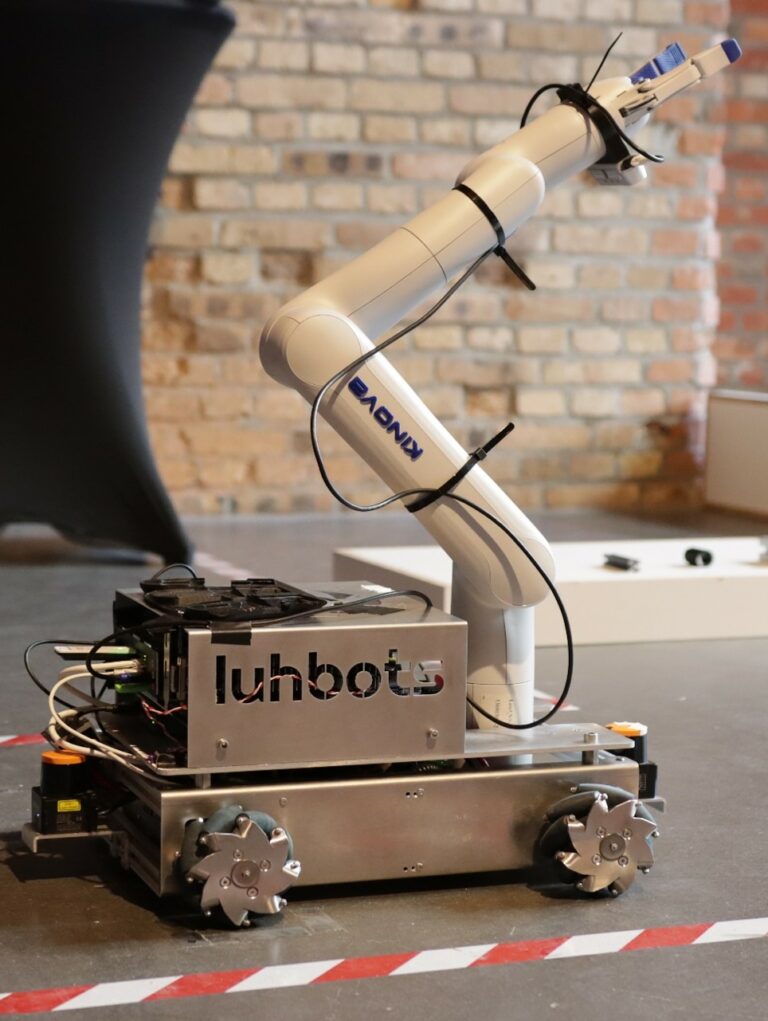@Work Hardware
Mechanical, electrical, electronic.
Hardware plays a crucial role in robots as it provides the physical components necessary for their operation. The hardware of a robot includes various mechanical, electrical, and electronic components that enable the robot to interact with its environment, perform tasks, and carry out its intended functions. Our approach for designing a new mobile platform for the use in the RoboCup@Work league is to build a robot that is smaller and therefore more maneuverable than other competitors. Besides building up the system in the first place we aim for low maintenance costs as well.
Our approach to developing a new mobile platform for use in the RoboCup@Work league is to build a robot that is smaller and thus more agile than other competitors. In addition to building the system, we also aim for low maintenance costs.

Hardware Modules
Base construction
The platform’s base construction is composed of a simple metal sheet structure combined with standard aluminum profiles. This design allows for easy replacement of the externally mounted 3D-printed sensor cases, facilitating faster evaluation of these components. To propel the base, four 65W BLDC motors with a 1:26 gearbox are employed, each connected to a mecanum wheel. The motor drivers are custom-developed electronics that are currently controlled using a USB protocol, but future plans include implementing CAN communication. The base is equipped with a Li-Ion accumulator as its power source, along with a self-developed voltage regulation and distribution board.
Actuation
To facilitate manipulation tasks, we employ the Kinova Gen3-lite robot, which is lightweight and cost-effective, and features an integrated gripper. The compact size of the robot arm allows for seamless integration into the base platform.
Sensors
The mobile base is outfitted with two off-the-shelf laser range finders (Hokuyo UST-LX10) positioned at the front and rear of the platform. These sensors have a detection range of up to ten meters, which is more than adequate for indoor applications. Additionally, an RGB-D camera (Intel RealSense D435i) is mounted on the manipulator’s wrist for object detection, classification, and barrier tape detection. In the future, time-of-flight sensors will be incorporated into the base to eliminate dead zones in the laser scanners.
The Hardware-Team

Jan Pöthig

Stefan Wendeler

Jonas Grau

